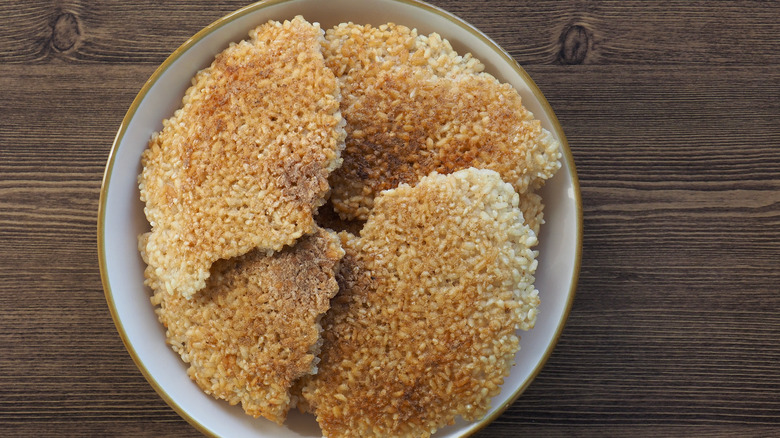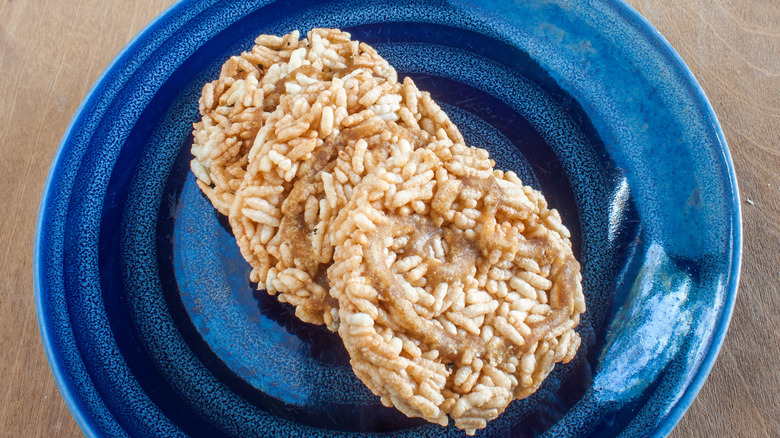What To Do With The Scorched Rice At The Bottom Of Your Pot
What do you do when you've made up a pot of rice and discovered a layer of scorched rice at the bottom of the pot? Before you cuss out the stubborn, golden brown crust that the fluffy grains at the bottom of the pot may have morphed into, know that in many cultures around the world, the rice that you think is ruined actually gives rise to a whole new dish. Scorched rice can be sweet, savory, or even become part of an ensemble player for an aromatic brew. But whatever it is, like the water you cook pasta in, scorched rice is not to be frowned upon but enjoyed as the unexpected treasure that it is.
In the Philippines, where no meal is complete without rice, scorched rice found at the bottom of the pot, or "tutong", is not wasted. Burnt rice can be swished in gravies and sauces where it will soften, or re-heated and served as garlic fried rice. As a side served with fried eggs and fried pork, the dish is considered a Filipino breakfast classic, according to Junblog. Scorched rice also occupies a place of honor in Korea, where browned grains that cling to the bottom of a rice pot — also known as nurungji — are soaked in water and boiled for two hours before it is served as tea (via Maangchi), which is called "sungyung," per The Spruce Eats.
Scorched rice can be used to make both savory and sweet dishes
Scorched rice isn't just the result of a happy accident — many food cultures take the time and trouble to make it from scratch. Bon Appétit suggests that the quickest way to do that is to make rice on a stovetop, but to cook it for ten minutes longer, in order to get the nutty, golden brown treat. Taiwanese cookbook author Liv Wan uses scorched rice, also called "guoba" as a base for a saucy shrimp dish. To make guoba, Wan cooks rice, leaves it in a fridge overnight, then cuts it into slices and bakes it until it is fully dehydrated. She tells Today that guoba can even be deep-fried until it is crisp, so it can be enjoyed neat, like an American rice cake.
In Persian food culture, tahdig is created when rice is parboiled for five minutes, mixed with yoghurt and saffron, then it's finished in a nonstick pot with a heavy lid, before the finished rice is garnished with dried fruit like cherries and pistachios, according to The Mediterranean Dish. Scorching rice deliberately to create something new is also a thing in Thailand, where it is known as khao taen — a cake made sweet when drizzled with cane sugar (via She Shimmers). So, the next time you burn your rice you don't have to worry because now you have plenty of delicious recipes to incorporate them into.

